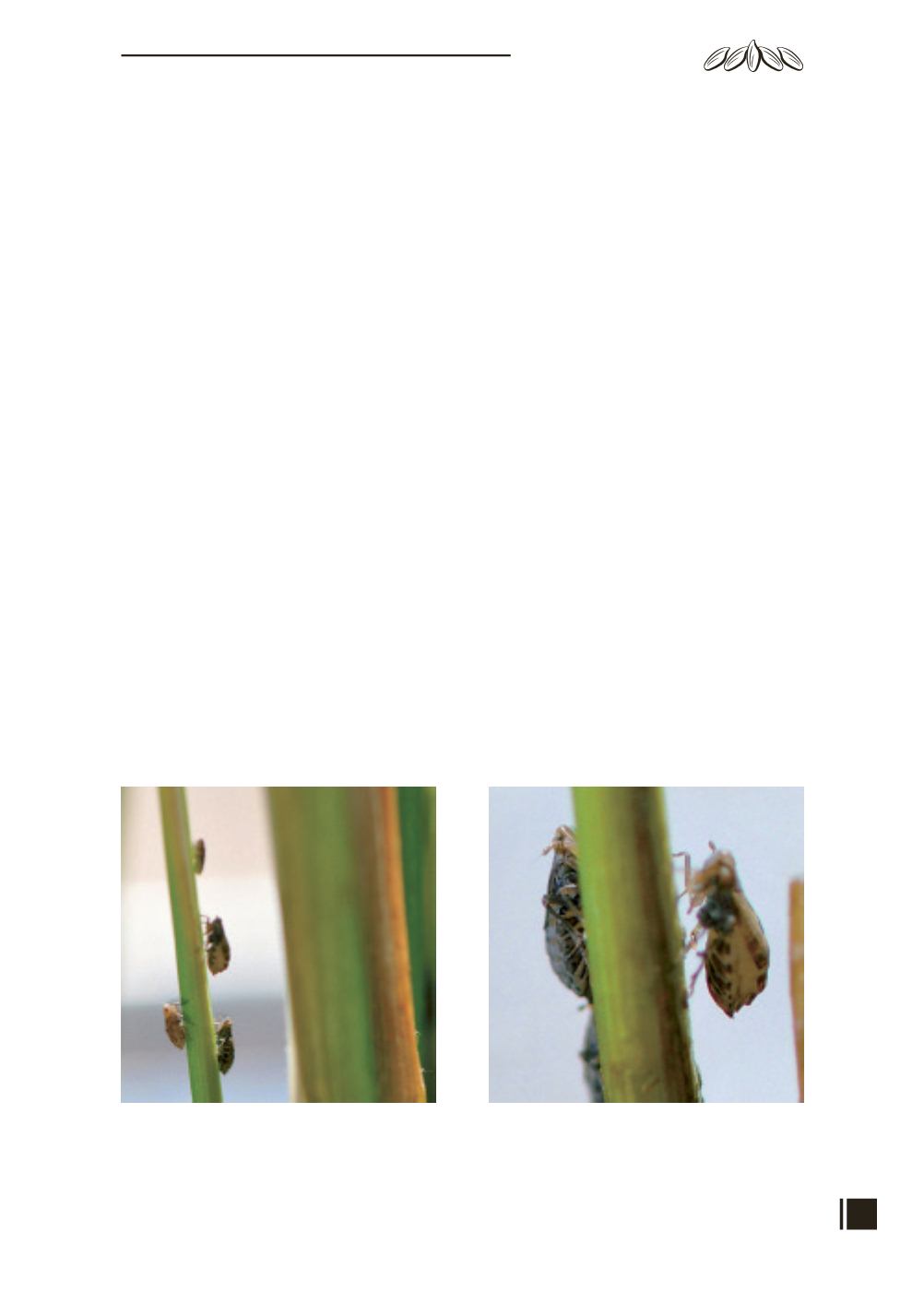
15
Rice Brown Planthopper
at almost all BPH endemic locations in India. This took a dramatic turn and detailed
studies conducted later clearly established that BPH present in Indian Sub-continent is
different with regard to its virulence to resistant varieties for BPH at IRRI and also in
many East Asian and South-East Asian countries.
History and Distribution of BPH in India:
Though, BPH is associated with rice since 1900, large-scale field damage was reported
for the first time in India during 1973 from Kuttanad area of Kerala. From 1973
onwards, its occurrence and damage in vast areas in farmers’ fields was reported from
Krishna-Godavari delta of Andhra Pradesh, Cauvery delta of Tamil Nadu, Tungabhadra
delta of Karnataka, Mahanadi delta of Orissa and vast areas in West Bengal particularly
Chinsurah region (Plates 5&6 Page 15). Almost during the same period, WBPH was
noticed in North-Western parts of the country mainly Punjab, Haryana and Western
Uttar Pradesh, although, the areas of occurrence and intensity of damage was low
compared to BPH (Kalode, 1974; Kulshrestha et al., 1974). The same situation
continued almost for a decade or more. Meanwhile, efforts were intensified to evolve
varieties resistant to BPH and a few of those were released for large-scale cultivation in
endemic regions. These varieties found favor with farmers initially and adopted in some
endemic regions. This probably resulted in reduction of BPH damage in some endemic
deltas. But simultaneously, WBPH started appearing along with BPH in all endemic
Plate 5: BPH nymphs feeding on nutritious rice
develop into brachypterous forms
Plate 6: BPH brachypterous females (Enlarged
view) can lay 300-400 eggs/female


